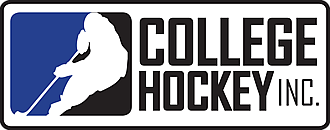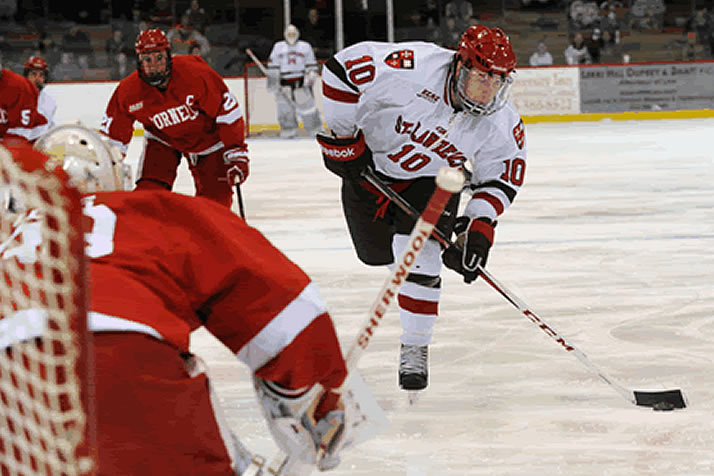


The puck drops on the 2013-14 NCAA college hockey season this weekend, and it promises to be one of the most intriguing seasons in memory.
What follows is the first six of 12 storylines we'll be watching as the season gets underway; you can find Part II here.
Who’s next? – After going 17 years without crowning a first-time champion, two of the last three NCAA champs have hoisted the trophy for the first time (Minnesota Duluth in 2011, Yale last year). In fact, all four Frozen Four teams a year ago were pursuing their first titles, further proof of the remarkable parity in college hockey today. The top two teams and nine of the 15 in the USA Today/USA Hockey Magazine Preseason Poll are in search of their first championship, though that’s hardly an assurance of success – Yale was tied for 25th in votes in last preseason’s poll.
New conferences – The landscape of college hockey changes considerably in 2013-14 with the addition of the Big Ten and National Collegiate Hockey Conference and Notre Dame’s move to Hockey East. The movement will spark new rivalries and rekindle old ones, affecting every conference but Atlantic Hockey and ECAC Hockey. In the new-look WCHA, for example, none of the regular-season or tournament champions from the past 21 seasons remain in the conference.

Returning scorers – Top talent in NCAA hockey has a high turnover rate, as many of the best players each year graduate or sign NHL contracts. A lot of offense is back in 2013-14, however, beginning with eight of the 12 players who scored more than 20 goals last year. That includes three of the six players who recorded more than 50 points last season: Nebraska-Omaha’s Ryan Walters, Boston College’s Johnny Gaudreau and St. Lawrence’s Greg Carey. In all, 37 teams welcome back their top scorer from a year ago (63%).
Sophomore stoppers – Lining up to slow down those shooters is an impressive array of goaltenders, particularly in the sophomore class. Coming back with a year under their belts are Providence’s Jon Gillies and Minnesota State’s Stephon Williams, who were both named first-team all-conference last season. The top two goalies in the nation last year were rookies back for another year in UMass Lowell’s Connor Hellebuyck (.952) and Miami’s Ryan McKay (.946). Other sophomores who should benefit from a year of seasoning between the pipes include Rensselaer’s Jason Kasdorf, Minnesota’s Adam Wilcox, Michigan State’s Jake Hildebrand and Boston University’s tandem of Sean Maguire and Matt O’Connor.
Future stars – NCAA hockey produced 30% of the NHL the past two seasons and many more of tomorrow’s pros will lace them up in the college ranks this season. A total of 200 NHL Draft choices dot NCAA rosters, led by first-round picks like Providence’s Mark Janikowski and North Dakota’s Jordan Schmaltz. Others, like Boston College goaltender Thatcher Demko, will be drafted next June, while many more will sign NHL contracts as undrafted free agents. Fifty-seven players – just shy of one per team – inked NHL deals after the 2012-13 season.
Late-round sleepers – Looking for the next Matt Moulson or Joe Pavelski? No development path produces more late-round NHL Draft success stories than college hockey, and some elite talents playing NCAA now already look like steals. Miami’s Riley Barber (Washington) and Quinnipiac’s Matthew Peca (Tampa Bay), to name two, were taken in the sixth and seventh rounds, respectively, and now look like potential stars. The time college allows players to develop – both in practice during the year and in terms of years before they need to be signed – has proven to be a huge benefit for players who may otherwise be longshots to reach the NHL.